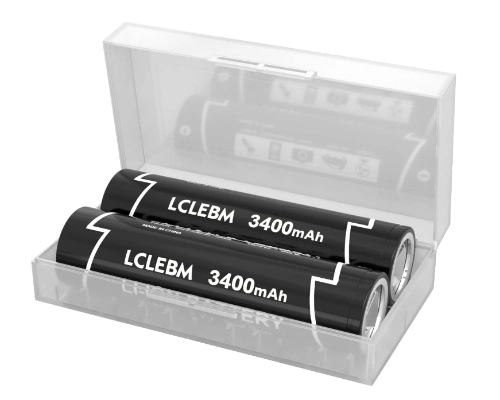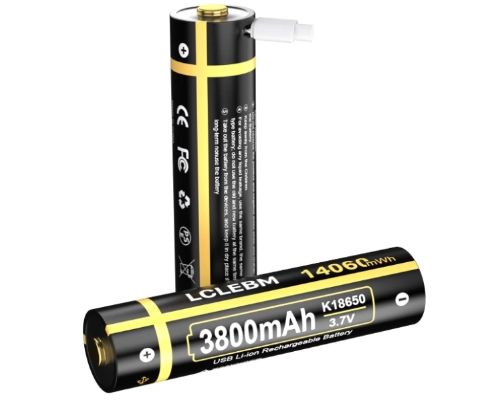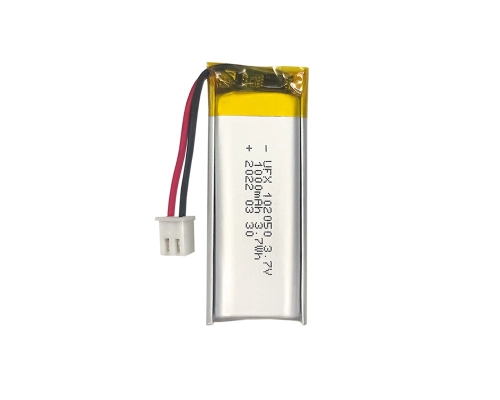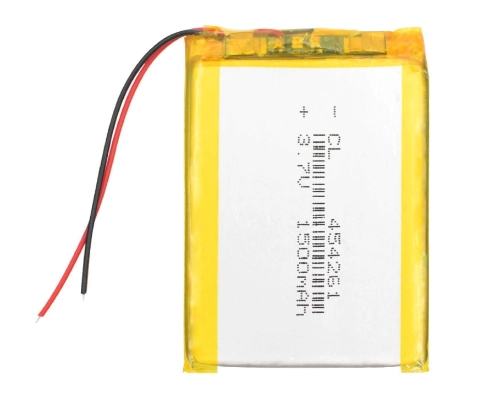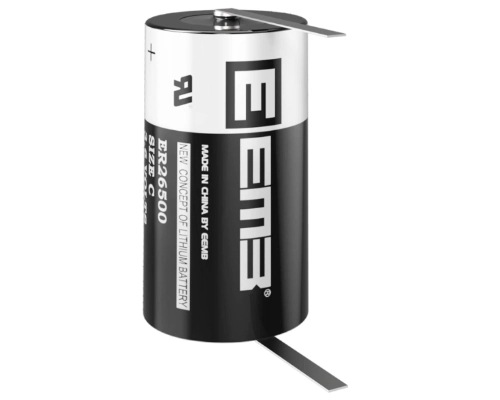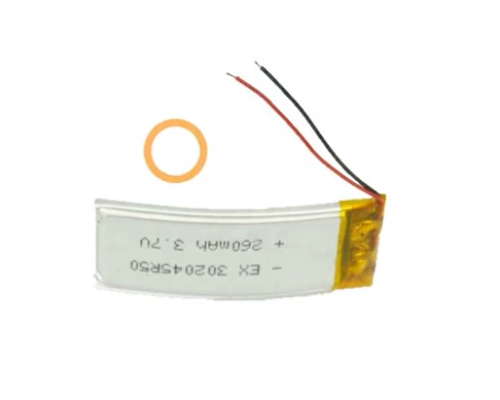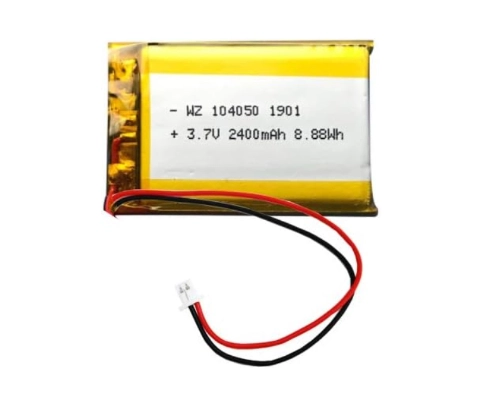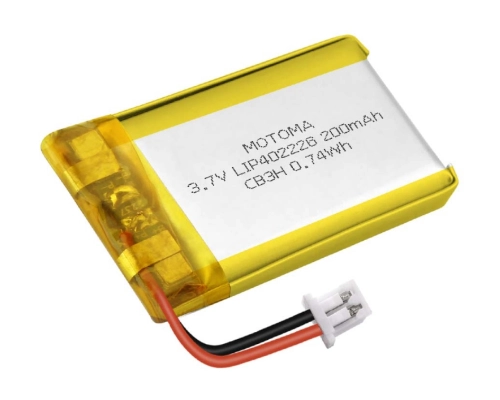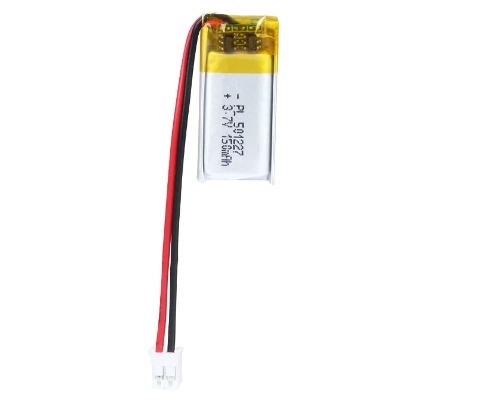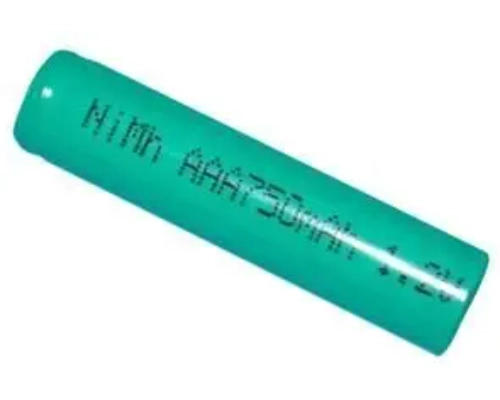Do you need help picking the right 3.7V 4700 battery? You’re not the only one. With so many choices available, knowing the correct battery can be confusing.
Fear no more, as this guide will sort everything out for you. We will examine the different 3.7V batteries and their features and explain how to pick the best one.
Let’s get started.
Part 1. Types of 3.7V batteries
Before discussing recommended 3.7V battery options, it’s essential to understand the different types of 3.7V batteries.
Well, here are some of the most common types of 3.7-volt batteries:
Lithium-Ion (Li-ion) Batteries:
Lithium-ion batteries are the most common 3.7V batteries. They are so robust and act as a housing for a lot of energy within their small size.
Lithium Polymer (LiPo) Batteries:
Lithium polymer batteries are similar to Li-ion batteries, except they are built with a gel-like substance inside them rather than a liquid. This allows them to be very light and flexible.
Part 2. Top 10 recommended types of 3.7V batteries
Here are the top 10 recommended types of 3.7 batteries that you can consider:
1. LCLEBM 3400mAh Flat Top 3.7V 20A Battery
A flat top-styled battery with a high capacity of 3400mAh, featuring a current best suited for high-drain devices. Reliable power and constant work for all the electronics available have been ensured.
Key Features:
- 3400mAh capacity
- 20A discharge current
- Flat top design
- High energy density
- Long-lasting charge
- Compatible with many devices
Application Suitability:
This is perfect for high-drain applications, such as flashlights, power equipment, and other devices requiring a lot of power. Its high discharge rate and huge capacity make it an ideal choice for top-tier electronics.
2. LCLEBM 3.7V 3800mAh Button Top Battery
With a button top design, this battery has a 3800mAh capacity—very versatile and powerful for various uses.
Key Features:
- 3800mAh capacity
- Button top design
- Rechargeable
- High energy density
- Stable performance
- Suitable for high-drain devices
Application Suitability:
Great for high-capacity devices: advanced flashlights, high-powered toys, and more.
3. Ufine Lithium-Ion 3.7V 1000mAh Pouch Battery
This pouch battery by Ufine has an amazingly compact design yet boasts of managing to pack 1000mAh, fitting in easily amongst small electronic gadgets.
Key Features:
- 1000mAh capacity
- Pouch design
- Lightweight
- Flexible shape
- Good energy density
- Reliable performance
Application Suitability:
The Ufine Lithium-Ion 3.7V 1000mAh Pouch Battery serves people with portable wearable technology. It is suitable for small gadgets and can provide backup energy for various electronics.
4. COOINS 3.7V 1500mAh 454261 High-Temperature Battery
This high-temperature battery is designed to perform well even in harsh conditions, with a capacity of 1500mAh.
Key Features:
- 1500mAh capacity
- High-temperature tolerance
- Rechargeable
- Stable discharge
- Long lifespan
- Compact size
Application Suitability:
Nothing can outdo this battery’s superiority and dependability when it comes to highly high-temperature electronic devices or specialized industrial machinery used in critical work applications or under extreme outdoor conditions.
5. EEMB ER26500 C Size 3.6V Lithium Low-Temperature Battery
Though slightly different in voltage, this lithium battery is known for its low-temperature performance and reliable energy delivery.
Key Features:
- 3.6V nominal voltage
- Low-temperature performance
- Long shelf life
- High energy density
- C size
- Stable discharge rate
Application Suitability:
The EEMB ER26500 is suitable for cold-temperature applications where conventional batteries may fail. Such batteries are typically used in cold-weather devices and devices with a long storage period.
6. EXLIPORC High-Quality Curved Lithium Ion Polymer Battery
This curved lithium-ion polymer battery offers flexibility in shape with high performance.
Key Features:
- Curved design
- High energy density
- Lightweight
- Flexible form factor
- Rechargeable
- Long-lasting charge
Application Suitability:
The EXLIPORC Curved Lithium Ion Polymer Battery is perfect for customized electronics, drones, and other small portable gadgets.
7. OCTelect 3.7V Polymer Ultra-thin Battery
This battery is ideal for applications where space is limited, thanks to its ultra-thin design.
Key Features:
- Ultra-thin design
- 3.7V voltage
- 2400mAh capacity
- Lightweight
- Flexible shape
- High performance
Application Suitability:
This battery is suitable for ultra-slim devices such as thin electronic gadgets and wearable tech, where space savings can be significant.
8. MOTOMA 3.7V High Discharge LiPo Battery 200mAh
This high-discharge lithium polymer battery provides excellent performance for demanding applications.
Key Features:
- 200mAh capacity
- High discharge rate
- LiPo technology
- Lightweight
- Rechargeable
- High energy density
Application Suitability:
The MOTOMA 3.7V High Discharge LiPo Battery is the best choice for devices requiring a high-grade discharge, such as any wireless control model, drone, or high-drain electronics.
9. YTKavq Lithium Polymer (Li-Po) 3.7V 150mAh Battery
A compact and reliable battery, the YTKavq Li-Po battery offers a small size with dependable performance.
Key Features:
- 150mAh capacity
- Li-Po technology
- Compact size
- Lightweight
- Reliable discharge
- Rechargeable
Application Suitability:
It is used in small electronic devices and compact-structure apparatus, such as remote controls, miniature apparatus, and standby power for micro-apparatus.
10. Dantona Nickel Metal Hydride-Nimh Rechargeable Battery
This NiMH battery is known for its reliability and rechargeability. Though it’s not a 3.7V battery, it’s included for similar applications.
Key Features:
- Nickel Metal Hydride (NiMH)
- Rechargeable
- High Capacity
- Reliable performance
- Long lifespan
- Environmentally friendly
Application Suitability:
The Dantona NiMH battery is well suited for those general applications where NiMH technology is desired, such as household electronics and many other rechargeable devices.
Part 3. Factors to consider when choosing 3.7V batteries
Choosing the correct 3.7V battery involves a few key factors.
Here’s what to keep in mind:
1. Capacity (mAh)
The capacity shows the energy units the battery can store and its physical size. A higher milliampere-hour (mAh) signifies that the battery will have a longer life between charges. Find a battery with a low enough capacity such that the runway for how long your device will remain on is the length you wish.
2. Discharge Rate
The discharge rate is measured in amperes (A), which tells how fast a battery can free its energy. By all rights, a high-discharge-rate battery must be selected to get decent performance out of devices that are heavy power consumers, such as drones or power tools.
3. Size and Shape
Batteries come in different sizes and shapes, like flat-top or button-top designs. Make sure the battery fits your device’s space. If you have a compact or custom device, you might need a battery of a specific shape or size.
4. Type of Battery Technology
Different battery types, such as Lithium-Ion (Li-ion), Lithium Polymer (LiPo), and Lithium Iron Phosphate (LiFePO4), offer various benefits. Li-ion batteries are high-capacity and long-lasting, LiPo batteries are lightweight and flexible, and LiFePO4 batteries are safe and durable. Choose the type that best fits your device’s needs.
5. Temperature Range
Think about the temperature at which the battery will be used. Some batteries work well in extreme temperatures, while others might not. Select a battery that performs well in harsh temperatures for devices used in harsh conditions.
Considering these factors, you can choose the best 3.7V battery for your device, ensuring it works well and lasts as long as needed.
Part 4. FAQs
-
Can I use a 3.7V battery in a device that needs a different voltage?
No, it would help if you only used a battery with the correct voltage for your device. Using a 3.7V battery in a device that requires a different voltage can damage the device or cause it to work poorly. Always check the device’s voltage needs first. -
When is it time to replace my 3.7V battery?
If your battery does not last as long as it used to, has trouble charging, or looks damaged, it might be time to replace it. These are signs that the battery may be worn out or malfunctioning. -
What safety tips should I follow when using 3.7V batteries?
Handle 3.7V batteries carefully. Keep them away from extreme heat, physical damage, and moisture. Always follow the manufacturer’s instructions to avoid accidents like leaks or fires. -
Can I recycle 3.7V batteries?
Yes, 3.7V batteries can be recycled. Many recycling programs accept lithium-ion and lithium-polymer batteries. Check with local recycling centers for the best way to dispose of them properly. -
How long do 3.7V batteries last if not used?
A 3.7V battery’s shelf life is usually 2-3 years if stored properly in a cool, dry place. After this time, the battery may not work as well, even if it has yet to be used.
Related Tags:
More Articles

How to Choose the Best Floor Scrubber Battery for Commercial Cleaning?
Selecting the ideal floor scrubber battery ensures a long runtime, rapid charging, and minimal maintenance for efficient commercial cleaning operations.
Battery for Blower vs Battery for Leaf Vacuum: Which One Should You Choose?
Battery for blower vs leaf vacuum—learn the key differences in power, fit, and runtime to choose the right battery for your outdoor tool needs.
How to Choose the Right Battery for Blower?
Choosing the right blower battery? Consider voltage, capacity, chemistry & usage. This guide helps match the best battery for peak performance.
How to Choose the Best Insulated Battery Box for Lithium Batteries?
Choosing the Best Insulated Battery Box for Lithium Batteries? Discover key factors such as size, material, and safety for optimal protection and performance.
7 Critical Elements on a Lithium Battery Shipping Label
What must be on a lithium battery shipping label? Learn 7 key elements to ensure safety, legal compliance, and correct handling across all transport modes.
